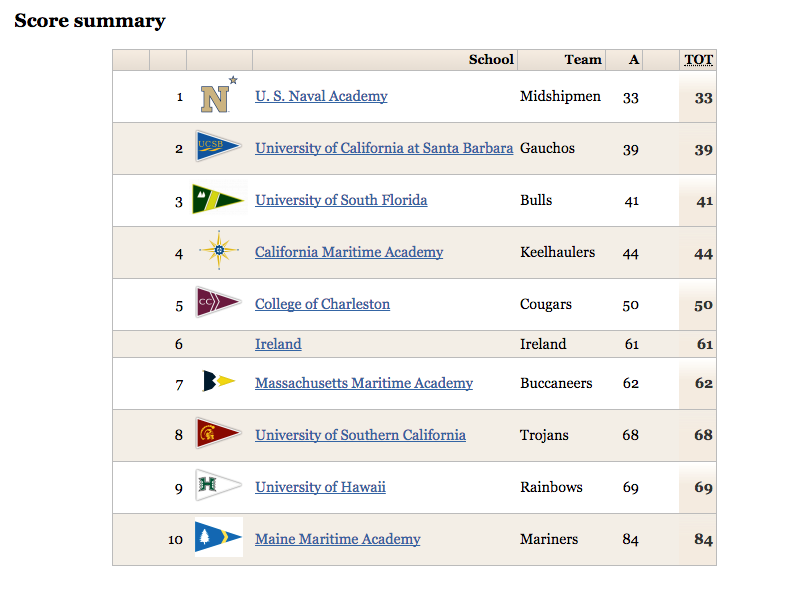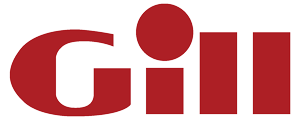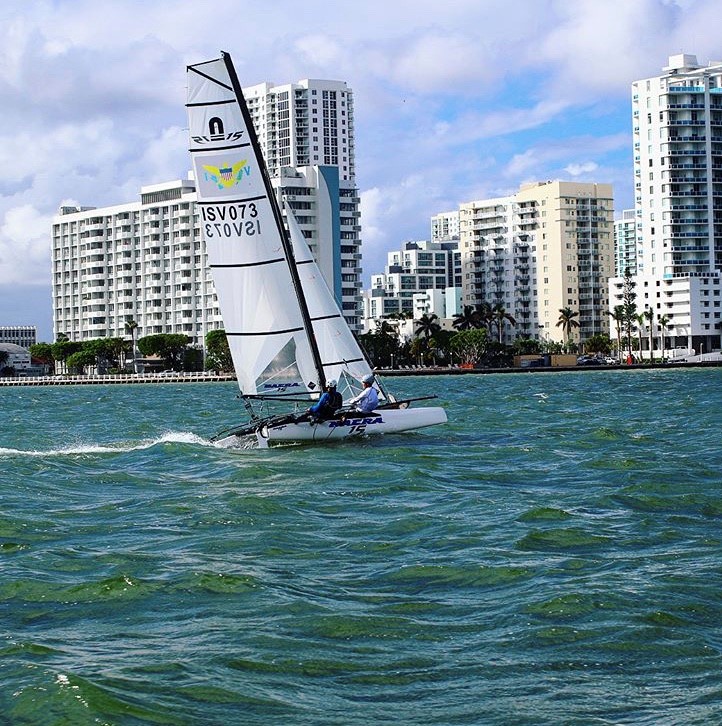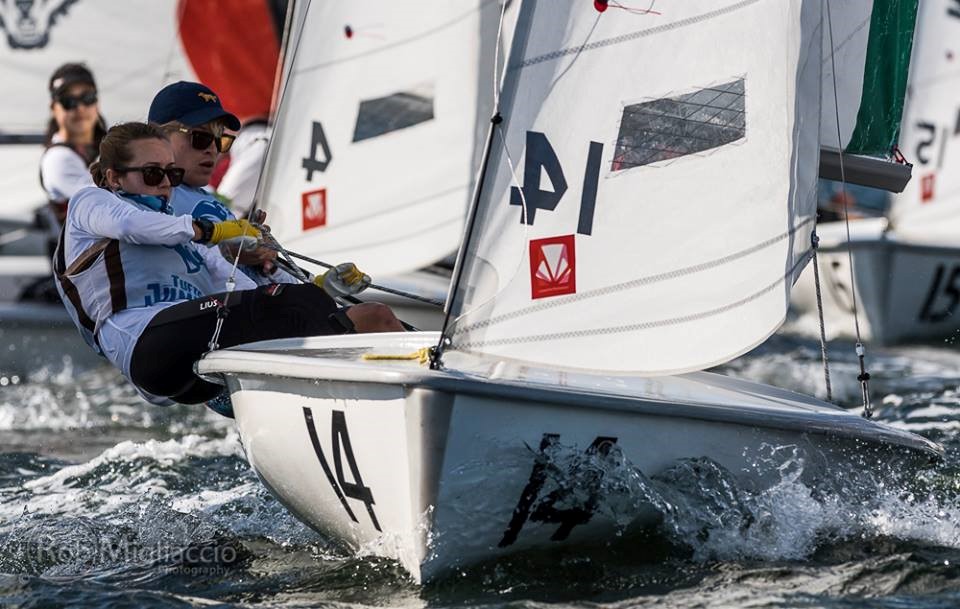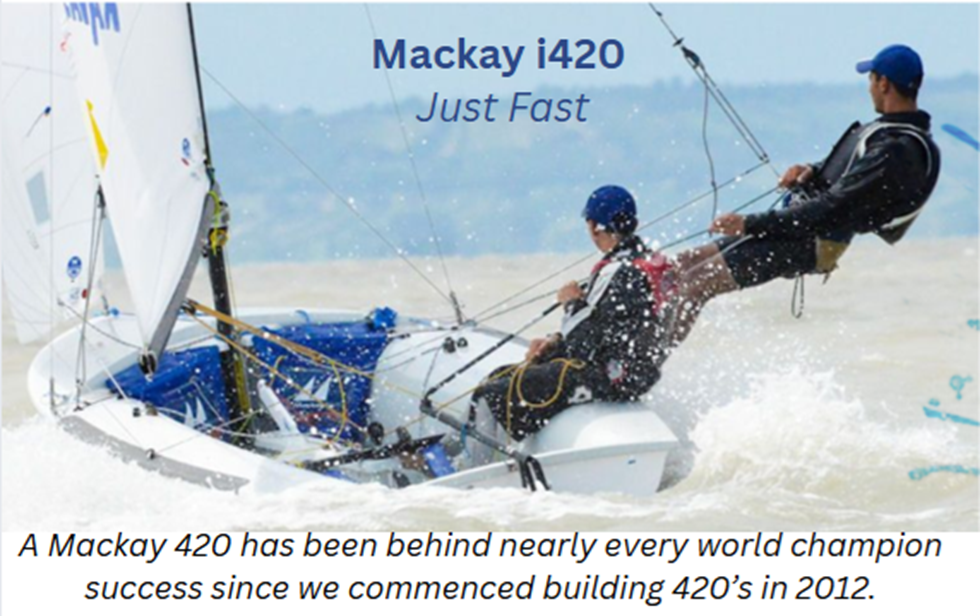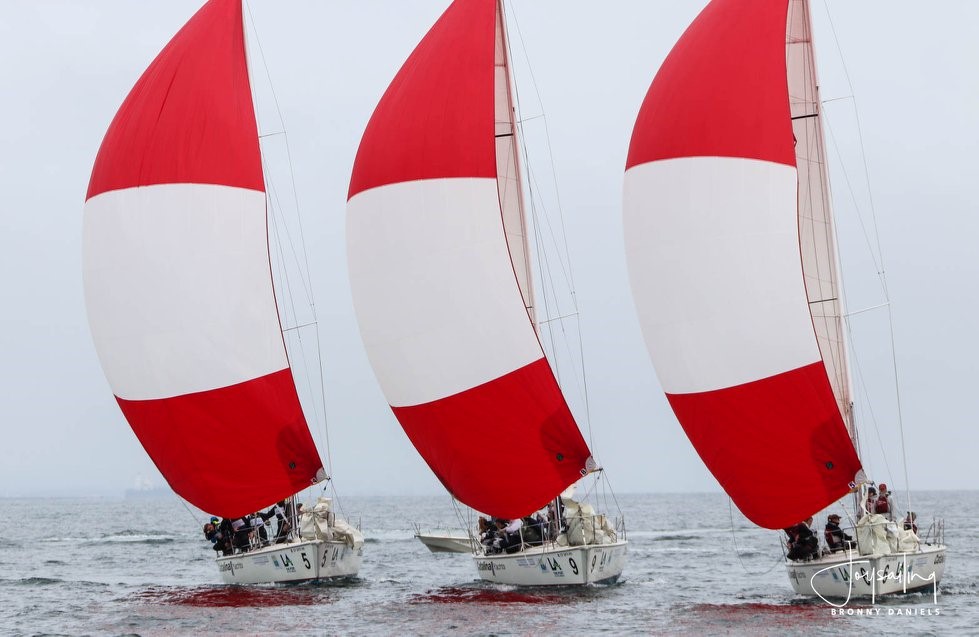
The top teams in collegiate offshore sailing descended on San Pedro, California for the Port of Los Angles’ Harbor Cup this past weekend. The event made for three days of 
First day racing conditions saw light winds of 2-4 knots in the first race causing the race committee to shorten and then eventually discard it. Soon after the first race the breeze then began building up to 5 and later 10 knots from a westerly direction. Everyone on the course was fast and the starts, rounding’s, and finishes were all very tight.
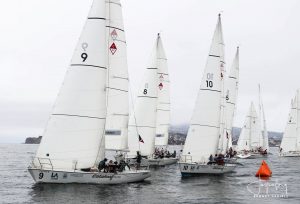
In the final day of racing the breeze was solid out of the east at 5-8 knots. College of Charleston started at the pin and led the entirety of race 9. Race 10 was light and the fleet was very tight. Crosses were close due to starboard tack being very favorable due to the wave state.
In the end the Naval Academy Midshipmen came out on top with an excellent regatta raced. 2nd place University of California Santa Barbara Gauchos finished two points ahead of the University of South Florida Bulls.
Congratulations to the Naval Academy on their win and to all the other competitors of this great event in collegiate sailing!
Commentary courtesy of Sam Tobio and photos by Joy Sailing
Blog
Gill Launches New Website!
Gill just launched their new website! As an incentive to check it out, the new Outlet is an additional 20% off. Shop now: https://www.gillmarine.com/us/outlet.html
Protect Your Investment: Sailing Helmet Sale!!

Reliable Racing having a sale through the end of April on our Pro-Tec helmets and custom helmet covers.
- Pro-Tec Ace Helmets: Reg. $54.95, Now $43.96
- Custom Helmet Covers: Reg. $14, Now $12.60
2018 ICSA Team Race Rankings #1, March 9
Friday, 9 March 2018– Here we go! Another spring filled with thrilling and highly competitive college team racing. Please support our sponsors who bring these rankings to you: Dynamic Dollies & Reliable Racing. My sailing team uses Dynamic dollies, as many do, and as good as their product is, I can say that their service, support, and professionalism are all even better. As for Reliable Racing, more and more we see competitive sailing improving and upgrading both the look and feel of the sport. Reliable Racing is ready to help your team do just that, with pinnies, sailing-specific helmets, and more.
The season is already underway, with results to give our coaches some data, including the Sharpe Trophy at Brown & the Bob Bavier at Charleston.
Top 5:
To see the FULL rankings and all the analysis, CLICK HERE!
Rankings are an average of our five panel team, Dillon Paiva (Navy), Johnny Norfleet (fordham), Bill Healy (Yale), Clinton Hayes (Stanford), and Ken Legler (Tufts). Complete with comments, these rankings help provide our fans and players alike not only with thoughts on who’s who, but also they offer quick analysis and glimpses into the teams themselves in the coaches comments. Enjoy!
About Sail1Design
Sail1Design is a grassroots organization, by sailors for sailors, dedicated to the youth, high school, college, and one-design sailing communities. Born in 2007, Sail1Design has grown considerably, and reaches out to all sailors wishing to enjoy and learn more about our sport. We have three main areas of business:
SAILING/MARINE INDUSTRY CAREER CENTER & JOB BOARD
We offer sailing’s #1 Career Center and Job Board, always chock full of incredible sailing job opportunities. Our comprehensive career center also offers job seekers the ability to create their own web page, highlighting their experience and posting their resume. Likewise, employers can search our resume database to find the right match for that open position. Sail1Design is proud also to be the official job board of the Intercollegiate Sailing Association (ICSA), the US High School Sailing Association (ISSA), and US Sailing.
MARKETPLACE & PROFESSIONAL BROKERAGE
Unique to the industry, Sail1Design hosts and manages an active private, by-owner marketplace, focusing on performance and one-design sailboats & gear. For all boats under 25′, our ads are free. What makes us different is that we also provide, side-by-side, professional brokerage services as well. We have had great success helping our sailing clients market and sell their boats, using our powerful client base, social media, and the brokerage industries multiple listing service to ensure your boat gets noticed.
AIRWAVES NEWS & CALENDAR
S1D also hosts Airwaves, an interactive, user fed Sailing Calendar and informative Sailing News, Articles, tips, & more. Airwaves has developed a great niche in the sailing publication world, and now boasts a seven-member staff of dedicated sailors, all contributing to our varied content.
Profiles in Junior Sailing: Airwaves Interview with Teddy Nicolosi
By Airwaves Senior Writer Taylor Penwell
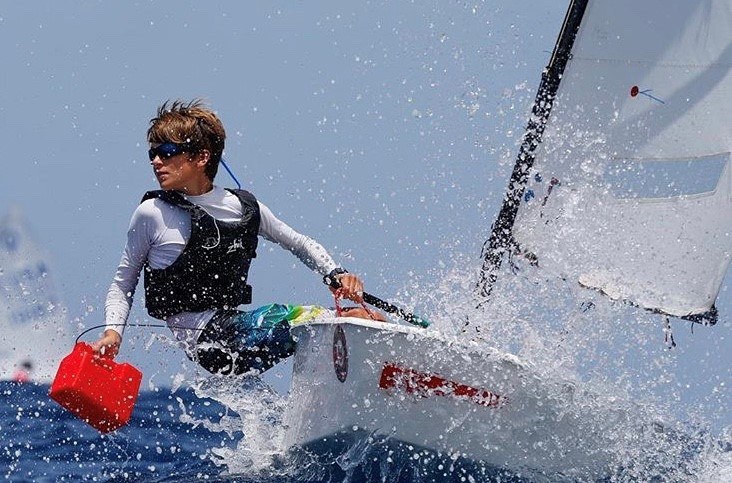
Please tell the readers and me a bit more about yourself Teddy.
I am a junior at the Antilles High School on the US Virgin Island of St. Thomas. I enjoy watching and playing sports, hanging out with my friends, and of course sailing. I currently sail the Nacra 15, Club 420, and sail on the Antilles High School Sailing Team.
Where are you from Teddy?
I was born in Chicago, Illinois, and lived there until the age of 7 when our family moved to St. Thomas. I have lived here in St. Thomas ever since.
Where did start sailing?
I first started sailing at the St. Thomas Yacht Club.
What age did you start sailing?
I first started sailing when I was 9, and when I was 11 I began sailing competitively.
What drew you to racing?
The curiosity of how it works and the idea of doing a competitive sport on the water drew me to racing.
You had a very successful optimist career, tell us about your top finishes and successes.
My best finishes in the Opti class started at the end of the summer of 2014. This was when I won my first big regatta, the New England Championship. The following regatta was the Opti Midwinters located in New Orleans, Louisiana, and I won that regatta too. Then at the end of 2014, I won the Orange Bowl Regatta in Miami. In the spring of 2015, I finished second overall at the South American Championship. Later in that summer, I finished 2nd overall in the North American Championship. In my last regatta of my optimist career, I took 7th place at the Optimist World Championship in Poland.
What do you attribute your success in the optimist class to?
Many things led to my success in the optimist class. The most significant attribution to my success was practice. During my opti career, I sailed around 4-5 days at first with the coach Santiago Galan and later the coach Augustin Resano. I also participated in many international regattas and gained experience quickly. After two years of intense practice and many regattas, I was able to reach the top of my fleet and win regattas.
How often do you train?
Now, I train about 3-5 days a week.
The Virgin Islands has produced some amazing sailors in junior sailing, what type of things do you think separate sailors from there compared to other places?
The Virgin Islands has produced some amazing sailors because of its junior sailing program and the amazing weather we get. Many of the best sailors from St. Thomas began in the optimist with the junior sailing program at the Yacht Club. Their really good coaches helped the sailors get off to a great start in their sailing careers. Another advantage the Virgin Islands has, is the weather. We can sail year round and rarely miss a day of sailing because it is almost never too light or too windy.
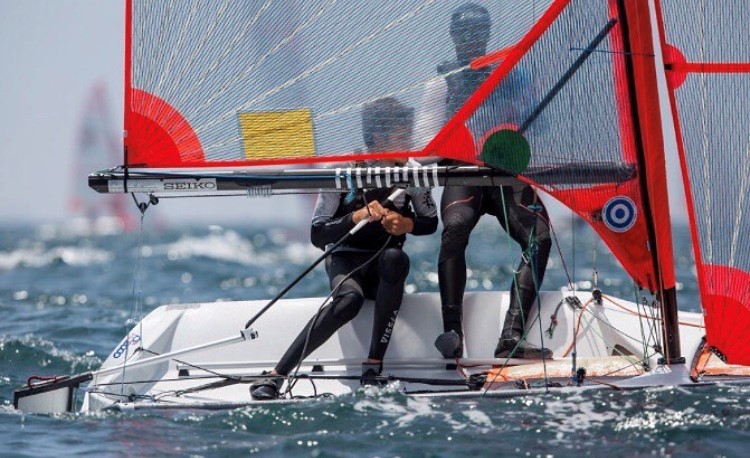
At first I sailed high school sailing with Antilles, some Club 420, which are basically the same as high school except with trapezes and spinnakers, and the 29er, which is a fast and high performance boat. Now, I still sail the same boats except that I sail the Nacra 15, an even faster boat, instead of the 29er.
What your top finishes were in all the boats you’ve sailed in?
In the Club 420, I’ve gotten 12th at Orange Bowl in 2015 and 7th in 2017, both with fleets of about 100. I was 10th in both the Hyannis Regatta in 2016 and the Buzzards Bay Regatta in 2016. I have also won a few smaller regattas in the Midwest and in St. Thomas. In the 29er I finished 8th at New England’s in 2016 and 7th at Orange Bowl in 2016. Our high school sailing team won the Baker (team race) National Championship and finished 6 in the Mallory (fleet race) National Championship. In the Nacra 15 I’ve gotten 4th in two regattas this past fall/winter with about 15-20 boats and won a small regatta two weekends ago with 4 boats in Port Charlotte.
How has the transition from a single-handed boat to double handed boats been like?
The transition was not very easy. At first I found it kind of annoying sailing with other people. Even if you sail your best and they make a mistake, then you do worse than what you could have done. It also stinks when you are the one that makes a mistake because then you feel bad for causing your teammate to do worse than what they could have been doing. Another challenge with double-handed boats is finding your teammate. Even if you were to sail with the best sailor in the world, you would still need time to get used to sailing with them and figuring out what jobs are whose on the boat before you could perform your full potential. The other problem with teammates is finding one. For example in my 29er career, I believe I ended up sailing with 10 or more different crews in a time span of a year and a half. This made it extremely difficult to perform at my full potential because I was always still getting used to sailing with my new crew. Although, now I do not mind it as much. For the past 6 months I have been mainly just sailing with my younger sister Mia, instead of switching around crews.
What are some of the characteristics you look for in crew members?
The most important characteristic, in my opinion, for a crew, is their determination and desire to learn more and become better sailors. I like crews that ask questions, even if they think they are dumb questions, because this shows that they are interested in learning how to become a better sailor. I also like crews that are athletic, because after all it is a sport, and being naturally athletic and strong makes a huge difference.
Your high school, Antilles won the National Championship last year. Tell us a bit about that experience.
Winning the High School National Championship was one of the best experiences in my life. I remember we were winning the regatta, but not by much going into the last race, so the race still mattered and there was a lot of pressure. We were all very anxious to win, but scared to loose. Luckily for us, right after the start, the race committee saw lightning, canceled the race and sent us in ending the regatta. I still remember that feeling of joy and accomplishment when our team found out that racing was done and we won. We sailed in celebrating. Still to this today I cannot believe that we won Nationals and when I think of it it reminds me of how far we have come and how great of sailors we are.
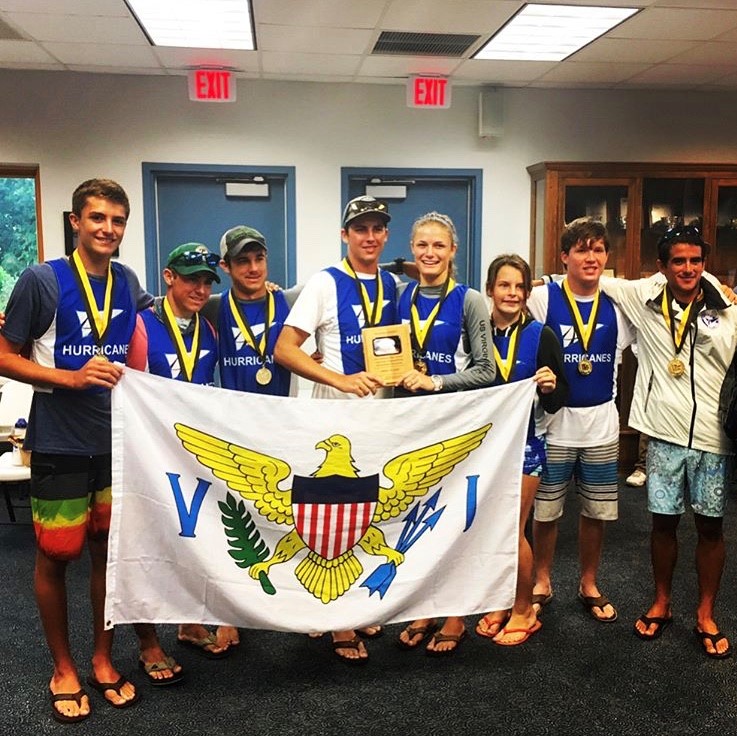
My 29er career has had its ups and downs. I’ve had a few alright finishes, but never amazing ones. One of my main problems was finding a crew that I could sail with for awhile. In the end I found it frustrating and wanted to start fresh in a new high performance and fast boat, the Nacra 15.
What are your goals moving forward with sailing? Are you planning on doing an Olympic campaign or attending a college sailing program in the United States?
Moving forward I plan on attending Yale University with my older sister Grace Ann and sailing on their amazing college sailing team. Right now Mia and I are trying to qualify for the junior Olympics in the Nacra 15. It’s hard to tell if I’ll make an Olympic campaign, but if the Nacra 15 goes well, I can try to qualify for the Olympics in the Nacra 17 (a bigger, faster, and more advanced version of the Nacra 15).
What drives you to keep getting on the water and competing?
What motivates me to practice and compete is the love I have for the sport. I love the water, traveling, and meeting new people that comes with sailing. I also love the feeling of winning which I assume everyone does, and I am willing to do what it takes to achieve that, which is getting as many hours as possible on the water.
When you’re not sailing, what other things do you enjoy doing?
I enjoy other sports like basketball and football. When I was younger and during my optimist career I played basketball as well as sailing. Now I don’t play anymore, but I still love to play pick up games of basketball and football with my friends. I also like watching TV, boating, and hanging out with my friends.
Giving It All for the Team: A Painful but Happy Four Years of College Sailing
by Emily Shanley-Roberts, Tufts University Class of 2018

I was born with a spine that curves in-and-out, side-to-side, however it pleases. It is the worst-behaved thing about me. This curvy, nonconforming piece of equipment is the first symptom that was noticed; it brought me to orthopedists and physical therapists for much of my young life. As I got older, my symptoms were exacerbated by years of ballet, injuries, and wear from athletics. My back pain grew to my shoulders, my knees started to age way too quickly, and I became exhausted. Halfway through high school I began to rely on daily physical therapy to continue to be able to compete at my beloved sport. For a while, it worked. I did not anticipate that my pain would get worse.
When I began sailing at Tufts, I wanted to be the golden child, the great investment of Ken Legler’s coaching. I tore my MCL in practice and sailed through it. I spent days in pain and didn’t know that others around me felt it too – I did not know that it was okay to take a break. I continued to do physical therapy, trusting that I just needed to repair my muscles. By May 2015, the pain was so bad that I could barely walk. After each race at team race nationals, my skipper would pick me up out of the boat, carry me to a chair, and set me down. Again, I thought that a summer off 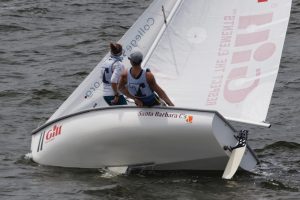
This summer, after my sixth national championship and third dislocation of my shoulder, I realized that this was more serious than just a couple of tired muscles and a screwy back. A series of MRIs and tests told me that I had two options: sitting out my senior year as I got surgeries, or managing the pain to be with my friends. My genetics dictate that I’m ‘loose-jointed’ with tendencies to swell up like Violet Beauregard in Willy Wonka and burn through cartilage like a blowtorch on North Field. Every missed step takes off my kneecap, every improper roll-tack pulls my shoulder out of alignment, and the chronic pain leaves me exhausted.
Discovering that I was not going to “get better” was less remarkable than the simultaneous discovery that some of my friends hurt too. Pain is common among athletes, with a spectrum ranging from muscle soreness after competing to debilitating chronic pain. As I’ve become more comfortable with communicating my limitations, my teammates have stepped forward to help me continue to succeed and to communicate their own limitations. The latter has helped me to feel accepted when I otherwise feel so very different from them. I am privileged to be able to help them manage their pain and let them know they’re not alone.
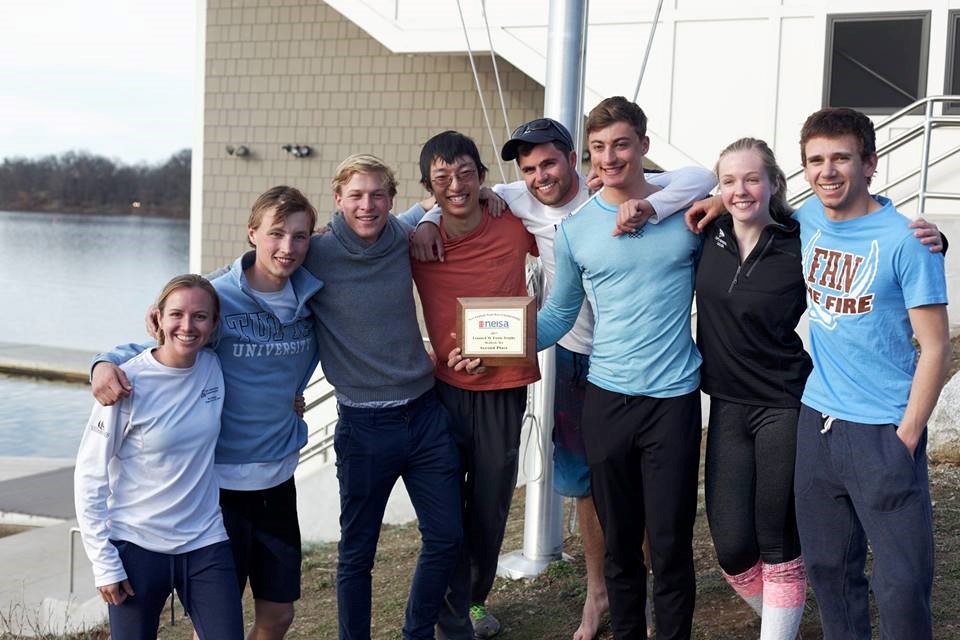
Moments like that define our team. Some of us cannot lift boats, so the others lift the boats. Ken won’t sail me when it’s breezy (unless it’s a championship), so this weekend I’ll coach the team race team. Moments like that define my experience of this sport, as well: I have friends around the ICSA that help me up the dock and fellow crews with whom I’ll trade kinesio tape and advil. If it weren’t for moments like these, I wouldn’t make the decision each weekend to throw all my energy into competing. The friendships I’ve made over the years make that decision every morning – that trade-off between comfort and excitement – easy. Despite how I feel at the end of each day, I choose to get back in my boat and compete for the most supportive team I could ask for against the friends that I hope to have for life. After all, the beauty of college sailing is that my limited ability does not limit my ability to compete and succeed – it just presents a different challenge.

